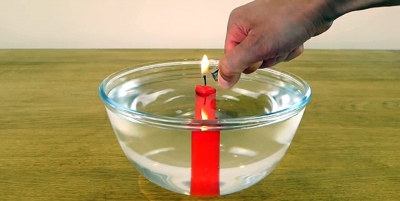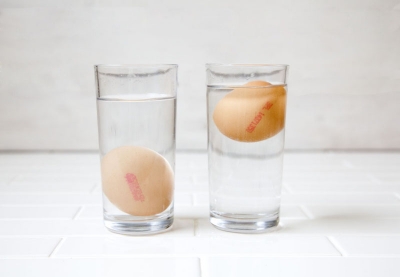What happens when you put water on a candle?

Warm the base of a candle and stick it to the bottom of a small bowl. Pour water into the bowl till the water reaches the rim of the candle. Light the candle. It will burn and the flame will form a crater in the candle.
The base of the flame will sink below the surface level of the water, but the water will be prevented from extinguishing the flame by the thin wall of wax that is left standing all around it.
How does the wall form?
The water takes up so much heat that the outer layer of the candle does not reach melting point. As a result, the wax there cannot evaporate and burn. It remains like a wall around the flame.
Picture Credit : Google
